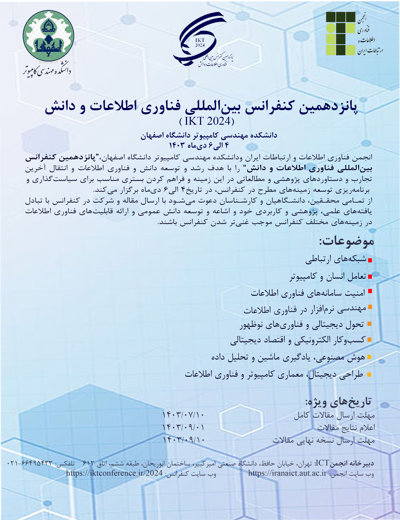0% Complete

نویسندگان :
کلمات کلیدی :
چکیده :
لیست مقالات بایگانی شده
طاهره رحمتی - بهروز شاهقلی قهفرخی
فرهاد عظیمی فر - ستایش کرمی - نیایش امینی
محمد قرشی - حسن حقیقی
فاطمه صبائی - دکتر احمد عبداله زاده بارفروش
Mohammad Ali Poorafsahi - Hamid Mala
Hamid Reza Naji - Aref Ayati
Seyed Hossein Siadat - Danial Ramezani - Fatemeh Ahani
Farsad Zamani Boroujeni - Doryaneh Hossein Afshari - Fatemeh Mahmoodi
عفت تقی زاده بیلندی - آرش دلداری - علیرضا صالحان




